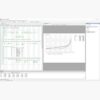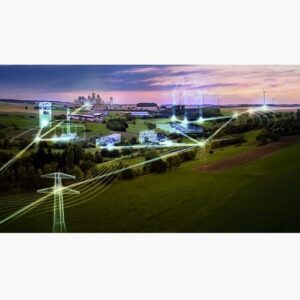Torsional Analysis (TOR) Siemens Advanced Dynamic and Transients Modules powered by PSS NETOMAC
Description
Torsional Analysis (TOR) Siemens Advanced Dynamic and Transients Modules powered by PSS NETOMAC
Torsional Analysis (TOR)
Requirements and Use Cases
The use of series compensation in order to increase transmission capacity and to stabilize grid operation can lead to the phenomenon of subsynchronous resonances (SSR) with drive shafts of conventional generating plants and thus can lead to damage of shafts and protection tripping. Converter-based technologies can also lead to subsynchronous interactions (SSTI) with the drive shafts. These dangers must be assessed already in the planning phase of such systems, but also when the resonances are detected during operation, and necessary countermeasures must be taken in order to avoid damages and fatigue.
- Assessment of the inherent tendency of drive shafts with several turbine stages, machines and excitation systems to oscillate, which can be excited by series compensation and converter-based technologies (HVDC, FACTS etc.)
- Evaluation of the mechanical stresses on drive shafts in power plants in case of faults
- Assessment of life expectation of drive shafts under regular stress due to torsional oscillations
- Analysis of the electromagnetic compensation processes associated with the resonances occurring and their effects
Solution
Based on the transient engine PSS?NETOMAC, the expert mode in this module (TOR) allows the extension of the models of the machines by the definition of the drive shaft in order to consider the influence of turbine stages and excitation system in the mechanical part of a power plant. On the one hand, this supports the user in the assessment of mechanical stresses on the drive shafts when subsynchronous resonances (SSR) and interactions (SSTI) occur and in the development of appropriate countermeasures when dimensioning and commissioning a plant. On the other hand, it enables the user to evaluate the electromagnetic effects of the compensation processes.
- Use of proven and successfully validated models and simulation methods of the PSS?NETOMAC transient engine
- Support of detailed mass definitions for realistic representation of turbine stages
- Various possibilities for modeling the drive shaft by distributing masses, torques and the Park transformation angle
- Possibility to use torsional data in the active frequency response (FRD module)








Reviews
There are no reviews yet.